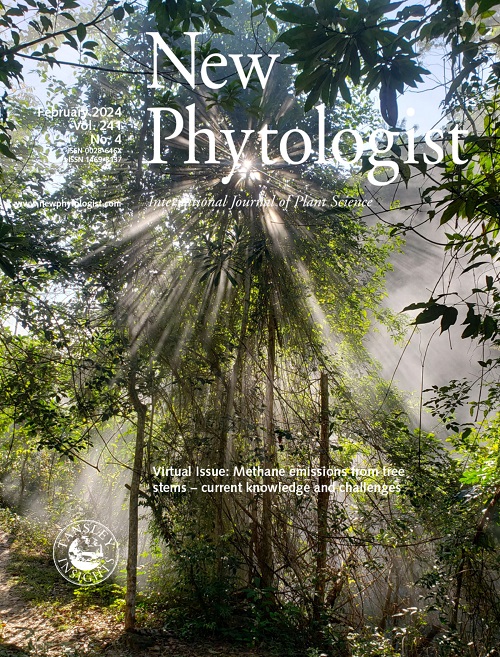NCR343 is required to maintain the viability of differentiated bacteroids in nodule cells in Medicago truncatula
IF 8.1
1区 生物学
Q1 Agricultural and Biological Sciences
引用次数: 2
Abstract
- Bacteroid (name for rhizobia inside nodule cells) differentiation is a prerequisite for successful nitrogen-fixing symbiosis. In certain legumes, under the regulation of host proteins, for example, a large group of NCR (nodule cysteine rich) peptides, bacteroids undergo irreversible terminal differentiation. This process causes them to lose the ability to propagate inside nodule cells while boosting their competency for nitrogen fixation. How host cells maintain the viability of differentiated bacteroids while maximizing their nitrogen-reducing activities remains elusive.
- Here, through mutant screen, map-based cloning, and genetic complementation, we find that NCR343 is required for the viability of differentiated bacteroids. In Medicago truncatula debino1 mutant, differentiated bacteroids decay prematurely, and NCR343 is proved to be the casual gene for debino1.
- NCR343 is mainly expressed in the nodule fixation zone, where bacteroids are differentiated. In nodule cells, mature NCR343 peptide is secreted into the symbiosomes. RNA-Seq assay shows that many stress-responsive genes are significantly induced in debino1 bacteroids. Additionally, a group of stress response-related rhizobium proteins are identified as putative interacting partners of NCR343.
- In summary, our findings demonstrate that beyond promoting bacteroid differentiation, NCR peptides are also required in maintaining the viability of differentiated bacteroids.
需要NCR343来维持树干苜蓿根瘤细胞中分化的类杆菌的生存能力
拟杆菌(根瘤细胞内根瘤菌的名称)分化是成功固氮共生的先决条件。在某些豆类中,在宿主蛋白的调节下,例如一大群NCR(富含结节半胱氨酸)肽,类杆菌发生不可逆的末端分化。这一过程导致它们失去在结节细胞内繁殖的能力,同时提高了它们的固氮能力。宿主细胞如何在最大限度地提高其氮还原活性的同时保持分化的类杆菌的生存能力仍然难以捉摸。在这里,通过突变体筛选、基于图谱的克隆和遗传互补,我们发现NCR343是分化类杆菌生存能力所必需的。在Medicago truncatula debino1突变体中,分化的类杆菌过早腐烂,NCR343被证明是debino1的偶然基因。NCR343主要在结节固定区表达,在那里类杆菌分化。在结节细胞中,成熟的NCR343肽被分泌到共生体中。RNA-Seq分析显示,许多应激反应基因在debino1类杆菌中被显著诱导。此外,一组与应激反应相关的根瘤菌蛋白被鉴定为NCR343的假定相互作用伙伴。总之,我们的研究结果表明,除了促进类杆菌分化外,NCR肽也是维持分化类杆菌生存能力所必需的。
本文章由计算机程序翻译,如有差异,请以英文原文为准。
求助全文
约1分钟内获得全文
求助全文
来源期刊

New Phytologist
PLANT SCIENCES-
CiteScore
17.60
自引率
5.30%
发文量
728
审稿时长
1 months
期刊介绍:
New Phytologist is a leading publication that showcases exceptional and groundbreaking research in plant science and its practical applications. With a focus on five distinct sections - Physiology & Development, Environment, Interaction, Evolution, and Transformative Plant Biotechnology - the journal covers a wide array of topics ranging from cellular processes to the impact of global environmental changes. We encourage the use of interdisciplinary approaches, and our content is structured to reflect this. Our journal acknowledges the diverse techniques employed in plant science, including molecular and cell biology, functional genomics, modeling, and system-based approaches, across various subfields.
 求助内容:
求助内容: 应助结果提醒方式:
应助结果提醒方式:


